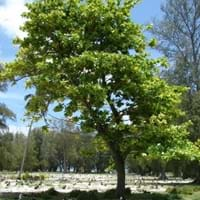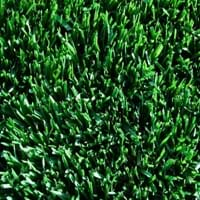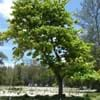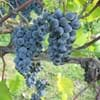Life Span
Perennial
Perennial
Type
Fruit, Perennial, Tree
Grass
Origin
Africa, Asia, Australia
World/Pandemic, North America, Europe
Types
Not Available
Alene, Barblue, Caliber, Canterbury
Habitat
Subtropical climates, Tropical areas
Cultivated Beds, Lawn, meadows
USDA Hardiness Zone
Not Available
3-10
AHS Heat Zone
Not Available
8 - 1
Sunset Zone
Not Available
A1, A2, A3, 1a, 1b, 2a, 2b, 3a, 3b, 4, 5, 6, 7, 8, 9, 10, 11, 14, 15, 16, 17, 18, 19, 20, 21, 22, 23, 24
Habit
Spreading
Mat-forming
Minimum Width
Not Available
Flower Color
Non Flowering Plant
Purplish Green
Flower Color Modifier
Not Available
Bicolor
Fruit Color
Dark Brown, Green
Not Available
Leaf Color in Spring
Dark Green
Green, Blue Green, Gray Green
Leaf Color in Summer
Green
Light Green
Leaf Color in Fall
Red
Green, Blue Green, Gray Green
Leaf Color in Winter
Red
Green, Blue Green
Leaf Shape
Broadly Ovate
Narrowly linear
Plant Season
Summer
Spring, Summer, Fall
Sunlight
Full Sun, Partial Sun
Full Sun, Partial Sun, Partial shade
Type of Soil
Loam
Clay, Loam
The pH of Soil
Acidic, Neutral
Acidic, Neutral
Soil Drainage
Well drained
Well drained
Tolerances
Dry soil
Not Available
Where to Plant?
Container, Ground
Ground
How to Plant?
Seedlings, Stem Planting
Seedlings, Sod
Plant Maintenance
Low
Medium
Watering Requirements
Needs less watering
Water frequently while growing
In Summer
Ample Water
Lots of watering
In Spring
Moderate
Moderate
In Winter
Average Water
Average Water
Soil pH
Acidic, Neutral
Acidic, Neutral
Soil Type
Loam
Clay, Loam
Soil Drainage Capacity
Well drained
Well drained
Sun Exposure
Full Sun, Partial Sun
Full Sun, Partial Sun, Partial shade
Pruning
Remove dead branches, Remove dead leaves
Remove damaged leaves, Remove dead branches, Remove dead leaves
Fertilizers
All-Purpose Liquid Fertilizer
Nitrogen
Pests and Diseases
Not Available
Dollar spot, Rust, Summer Patch
Plant Tolerance
Dry soil
Drought
Flower Petal Number
Not Available
Single
Foliage Texture
Fine
Fine
Foliage Sheen
Glossy
Matte
Allergy
Asthma
Cough, Itchy eyes, Runny nose
Aesthetic Uses
Showy Purposes
Ground Cover
Beauty Benefits
Making cosmetics
Not Available
Environmental Uses
Air purification, Food for birds
Erosion control
Medicinal Uses
Energy, Minerals, ß-carotene, Vitamin A, Vitamin C, Vitamin E
Not Available
Part of Plant Used
Fruits
Leaves
Other Uses
Grown for shade, Used As Food
Used in lawns and turf
Used As Indoor Plant
No
No
Used As Outdoor Plant
Yes
Yes
Garden Design
Edible, Fruit Tree
Lawns and Turf
Botanical Name
Terminalia catappa
POA pratensis
Common Name
Bengal almond, country almond, false kamani, Indian almond, Malabar almond, sea almond, tropical almond
Kentucky Bluegrass
In Hindi
जंगली बादाम
Kentucky Bluegrass
In German
Katappenbaum, Seemandelbaum, Indische Mandel
Kentucky Bluegrass
In French
Badamier
Kentucky Bluegrass
In Spanish
almendro malabar, almendro de los trópicos, almendrón, falso kamani, Egombegombe
Pasto azul de Kentucky
In Greek
Ινδικό αμύγδαλο
Κεντάκυ Bluegrass
In Portuguese
amêndoa, amendoeira, castanheira, anoz, árvore-de-anoz, castanholeira, coração-de-nego, castanhola, sete-copas, chapéu-de-sol, guarda-sol, terminália, figueira-da-índia
Kentucky Bluegrass
In Polish
Migdałecznik właściwy
Wiechlina
In Latin
inti almont
Kentucky Bluegrass
Phylum
Magnoliophyta
Magnoliophyta
Class
Magnoliopsida
Liliopsida
Family
Combretaceae
Poaceae
Clade
Angiosperms, Eudicots, Rosids
Angiosperms, Commelinids, Monocots
Tribe
Not Available
Poeae
Subfamily
Not Available
Pooideae
Importance of Indian Almond and Kentucky Bluegrass
Want to have the most appropriate plant for your garden? You might want to know the importance of Indian Almond and Kentucky Bluegrass. Basically, these two plants vary in many aspects. Compare Indian Almond and Kentucky Bluegrass as they differ in many characteristics such as their life, care, benefits, facts, etc. Every gardener must at least have the slightest clue about the plants he wants to plant in his garden. Compare their benefits, which differ in many ways like facts and uses. The medicinal use of Indian Almond is Energy, Minerals, ß-carotene, Vitamin A, Vitamin C and Vitamin E whereas of Kentucky Bluegrass is Not Available. Indian Almond has beauty benefits as follows: Making cosmetics while Kentucky Bluegrass has beauty benefits as follows: Making cosmetics.
Compare Facts of Indian Almond vs Kentucky Bluegrass
How to choose the best garden plant for your garden depending upon its facts? Here garden plant comparison will help you to solve this query. Compare the facts of Indian Almond vs Kentucky Bluegrass and know which one to choose. As garden plants have benefits and other uses, allergy is also a major drawback of plants for some people. Allergic reactions of Indian Almond are Asthma whereas of Kentucky Bluegrass have Cough, Itchy eyes and Runny nose respectively. Having a fruit bearing plant in your garden can be a plus point of your garden. Indian Almond has no showy fruits and Kentucky Bluegrass has no showy fruits. Also Indian Almond is not flowering and Kentucky Bluegrass is not flowering . You can compare Indian Almond and Kentucky Bluegrass facts and facts of other plants too.





